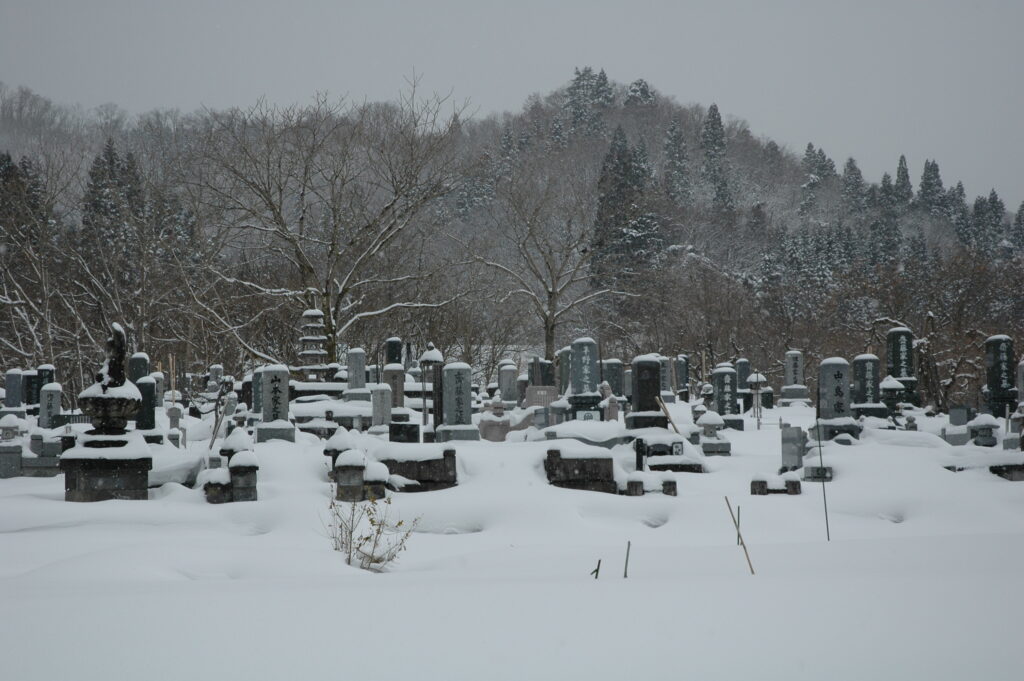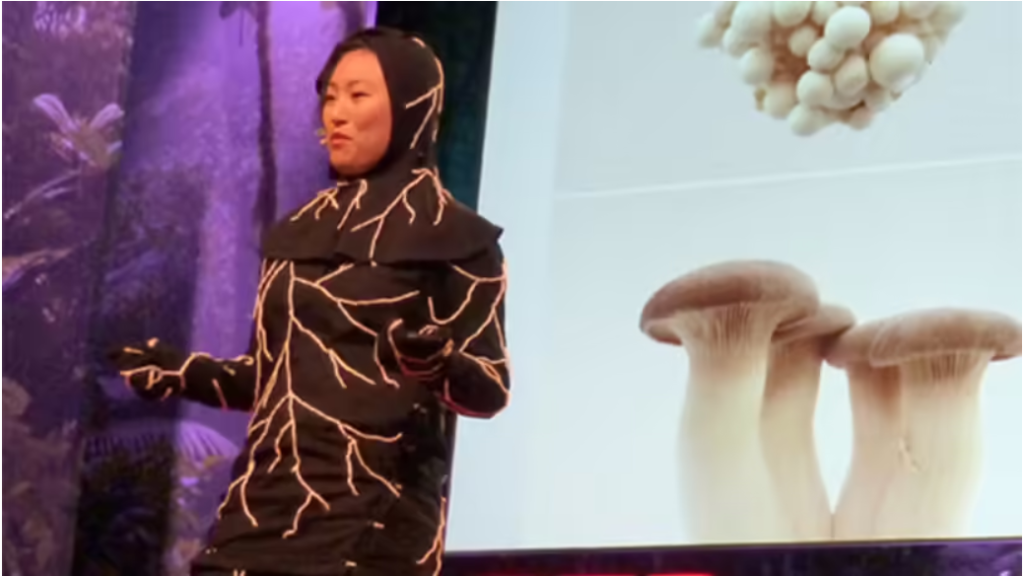Shortly after this post goes live, Christian and I will be getting ready to tour the catacombs in Rome, an activity I insisted we do since we would be away from home during my favorite holiday. Halloween is a time when we think about death more than usual, and – based on my history with this blog – it’s a time when I write about death more than usual. I think there’s value in normalizing conversations about death, and so, to that end, as I make my way among human remains below the Eternal City, you can read about how we, in America, tend to lay our dead to rest… and how that is changing.
I recognize right off the bat how incredibly blessed I am to be able to say that I have not dealt with much death in my life. Coming from a very small family that doesn’t really do much in the way of funeral arrangements, I don’t think I even saw a body in a casket until I was almost 30 – and even then it was a member of my boyfriend’s family. I, of course, didn’t bring up my own discomfort in the situation because the people I knew there were actively grieving, but the whole process of preserving and sealing away a body struck me as terrifyingly unnatural. (I was more used to quiet, non-religious, family-only gatherings that maybe involved the scattering of ashes in a meaningful place.)
There are many different types of death rites all over the world, and I do not intend to show disrespect to any of them in this post (though I probably will). I am simply stating that experiencing conventional American funeral practices for the first time as an adult was more unnerving than I expected it to be – and I can’t say it’s gotten any easier in the handful of times I’ve seen since then. That level of unease only increased during my preparation for this post as I looked into what was long considered to be the most common practice for the end of life in our country.

Preservation and Burial
The preservation of bodies after death dates back to several ancient cultures, including – most notably – Egypt, where it was believed that preserving the body would allow the spirit to pass into the afterlife.[1] Various methods of preservation persisted over the years, and it was still the most common method of dealing with bodies in the US until very recently. According to a 2019 report in the Washington Post, more than 64,000 tons of steel and 1.6 million tons of concrete were going into the ground in cemeteries every year, and funeral homes were going through more than 4 million gallons of embalming fluid annually.[2]
Embalming fluid consists of formaldehyde, methanol, and other chemicals that will preserve the body for several weeks. Formaldehyde exposure is regulated by OSHA for morticians, as it is a known carcinogen, but there are also examples of groundwater contamination near cemeteries as toxic chemicals leach into the soil. Based on available information, it seems that formaldehyde is not the only substance of concern – some information points to the varnishes and other chemicals used on the caskets themselves posing a risk as well.[3],[4] In either case, health concerns exist when caskets containing preserved corpses are put directly into the ground. One can now opt for concrete grave liners or “vaults,” which limit such risks, but those carry their own environmental impact, given the high carbon footprint of concrete.[5]
Cremation
As I mentioned above, cremation is what I’m used to based on my own family’s practices, so for many years I figured that was what I would do too. And the frequency of people choosing cremation is on the rise, as well, at a projected rate of 57% over burials (36%) in 2021.[6] (In 1980 the cremation rate was under 10% in the United States.)[7] Part of this increase is linked to the fact that cremation is typically far cheaper than burial, but to me it just felt like a more natural process than being embalmed and sealed in cement.

A few years ago, I was very disappointed to learn that cremation has a large carbon footprint as well, given that the process involves heating a cremation chamber to as high as 2,000 degrees Fahrenheit for up to two hours,[8] representing the equivalent of about two tanks of gas in a car.[9] There is also a risk of heavy metals dispersing into the air, as our bodies accumulate a lot of them, such as mercury in fillings. And sometimes ashes are still preserved in a cement vault in a cemetery, requiring additional land and concrete use.
A lower-carbon alternative to standard cremation is called alkaline hydrolysis, or “water cremation.” The body is placed in a pressurized chamber with water and potassium hydroxide, and the chamber is then heated to 300 degrees. The process liquefies and sterilizes soft tissue in approximately three hours, leaving larger pieces of bone behind. It is generally more expensive than conventional cremation but less expensive than burials.[10] Still, it is less known, less available, and less accepted, as some people have negative responses to the idea of sending liquefied human remains down the drain (though that is what happens to blood during the embalming process). Alternately, the resulting liquid can be used as a very effective fertilizer, an idea that actually appeals to me.
Green Burials
After learning that cremation was not as environmentally friendly as I had once suspected, I was disappointed and at a loss for options – if only there were a simpler way. Around that time, I heard about a “mushroom suit,” which is a burial shroud with mushroom spores sewn into the fabric. The idea was that the body would be buried directly in the ground, and the mushroom spores in the suit would help the body decompose naturally. The designer’s TED talk made headlines, and her idea was to promote radical acceptance of death as well as more eco-friendly burial practices.[11]

Image credit: [12]
Unfortunately, it seems that the mushroom suit was more of an art piece than anything else and is reportedly ineffective at best. Additional scrutiny over the years points to possible ecological risks from eutrophication in nearby waterways, and skeptics stress that we shouldn’t be trying to improve on a system that already works, i.e. natural decomposition.[13] The good news is that eco-friendly burials – in which a body is wrapped in a natural fiber shroud and put directly into the ground – are gaining popularity across the country, providing a much more sustainable option for people who would like to return to the earth with as little impact as possible. While only 5% of burials today in the US are green,[14] over 60% of people planning ahead are interested in exploring green burial options.[15]
Conventional burials – and even burial plots for cremated remains – represent what is effectively an indefinite use of land, which is in finite quantity. In addition, we know there are potential environmental risks that range from carbon footprint to groundwater contamination. Plots in green cemeteries, on the other hand, can be available for use once again after the body is decomposed, which can happen in as little as two years, and environmental and health risks associated with the process are minimized. Certain regulations created for more conventional burial practices have hampered the expansion of green burial sites across the country, but awareness of and demand for that option is growing.[16] I, personally, was very pleased to learn that there is a green cemetery in Penn Hills, outside of Pittsburgh.[17]
While these conversations can be difficult to have with loved ones, it is important to address the issue and to be clear about your priorities. I recognize that not everyone might be as comfortable as I am with the concept of such a seamless return to nature, but I have told my immediate family that if I am injected with preservatives and sealed in a cement case, I will come back and haunt every one of them.
~
Have you explored green burials or alternative end of life options? Have you taken steps to destigmatize conversations about death? I’d love to hear more about your own exploration in the comments below.
Thank you for reading – and Happy Halloween!
[1] https://www.ncbi.nlm.nih.gov/pmc/articles/PMC3931544/
[4] https://www.disabled-world.com/health/cemetery.php
[5] https://radicalmoderate.online/concrete/
[6] https://nfda.org/news/statistics
[7] https://time.com/4425172/cremation-outpaces-burial-u-s/
[8] https://www.popularmechanics.com/science/health/a18923323/cremation/
[10] https://cremationinstitute.com/water-cremation/
[11] https://www.ted.com/talks/jae_rhim_lee_my_mushroom_burial_suit?language=en
[12] https://science.howstuffworks.com/environmental/green-science/mushroom-burial-suit.htm
[13] https://connectingdirectors.com/56089-mushroom-burial-suit-called-into-question
[14] https://www.hellalife.com/blog/communication/green-burials-are-a-growing-trend/
[15] https://nfda.org/news/statistics
[17] https://www.pennforestcemetery.com/
1 Comment
Rebecca · October 30, 2022 at 11:10 pm
I am going to be creamated. No service, no bells, no dinner. Just creamated. ❤